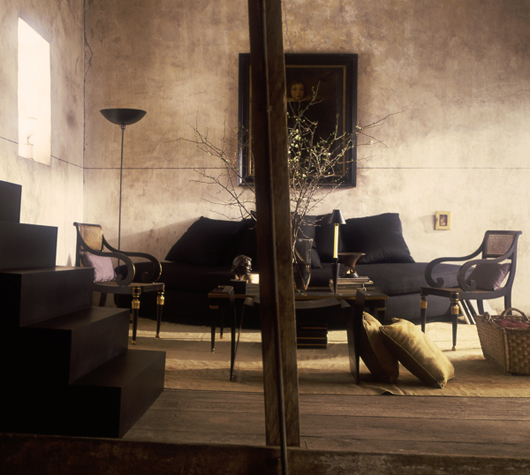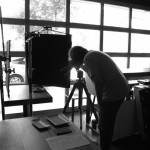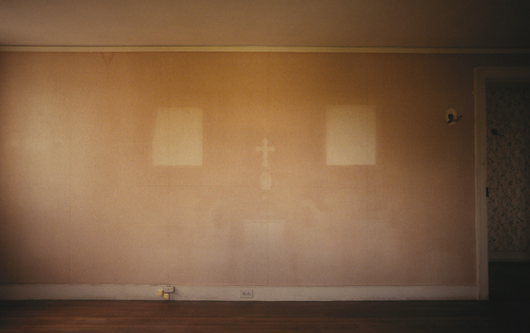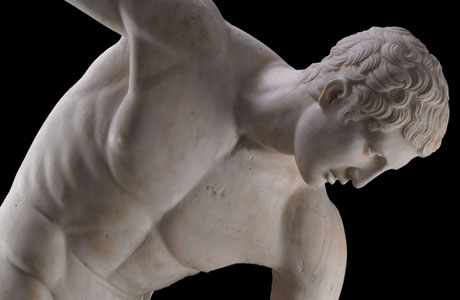
On October 28, 2012, Dr. Jeffrey Hurwit delivered his lecture, “Nudes and Nudities in Greek Art” to a public audience at the University of Oregon in Portland at the White Stag Block. Following his lecture, Dr. Hurwit led a tour of the newly opened exhibit at the Portland Art Museum, The Body Beautiful in Ancient Greece. The lecture and tour were in collaboration with the Portland Art Museum and The Body Beautiful.
A world renowned expert in the field of ancient Greek art, Professor Hurwit had been asked by the University of Oregon in Portland School of Architecture and Allied Arts to lecture to a general audience and to focus on works of art on display in The Body Beautiful.
The Body Beautiful in Ancient Greece at the Portland Art Museum is an exhibit made possible by a collaboration with London’s British Museum. The exhibit, curated by Ian Jenkins and Victoria Turner, brings to Portland, Oregon what will be the only West Coast showing of the 120 objects usually on display as part of the British Museum’s collection of Greek and Roman art.
In what Professor Hurwit called “an extraordinary collection”, The Body Beautiful is an exhibit that has even managed to awe its curators with the striking majesty of its display at the Portland Art Museum. Hurwit related hearing from the curator, Ian Jenkins that “‘Nowhere has this [exhibit] been displayed better than here in Portland.’ “ And, indeed, as Hurwit illustrated, taken together these works powerfully illuminate a breadth and depth of the Greek and Roman obsession with the human body.
Professor Hurwit’s lecture addressed specific works included in the exhibit and introduced the topic of nudity in ancient Greek art as representational and containing differing meanings dependent upon context and the individual. Nudity, explained the professor is a costume used by Greek artists to depict a range of roles and connotation. “In ancient Greek art,” commented Professor Hurwit, “there are many different kinds of nudity that can mean many different things….Sometimes they are contradictory.”
The content of the exhibit “speaks to us today” said Hurwit, and “reveals and celebrates our nature and physical being and bodies.” Dr. Hurwit began by explaining how the pieces on exhibit in The Body Beautiful exemplify the ideals of the ancient Greek body.
In 440 BC the Greek philosopher, Protagoras wrote “man is the measure of all things.” While much debate and discussion has surrounded this fascinating statement the general consensus is that judgments about qualities are subjective, truth is a relative thing, and the individual is the judge of all things. To the ancient Greek mind, however, beauty was not relative.

So comes the work of Polykleitos of Argos and his Doryphoros (made between 450-440 BC). Polykleitos wrote a treatise on art called the Kanon and created the Doryphoros to demonstrate his theories. The Kanon was based on the Pythagorean idea of symmetria, the notion that the parts of a form must have a proportional relationship to the whole, a mathematical formula that determines the perfect proportions of the ideal male body.
The Doryphoros is a study in contracts, in bent versus straight, right versus left, and in opposites. Yet upon close study, all of these components are beautifully balanced in perfect equilibrium, right contradicts a flowing left, straight compliments bent, relaxed balances flexed, and stillness counters movement. This vision of highly charged repose collaborates to give the viewer a visual image of harmony.
The Doryphoros stands as a visual manifestation of the Greeks’ relentless obsession with structure and musculature, of the youthful male physique, and the male form defined by sharp lines and deep grooves counter-balanced with the exaggerated ridgey , almost-lovehandle-like quality of the hips (an interesting contradiction to the developed musculature of the rest of the form). This is an idealized perception of what a man ought to look like. It is the “perfect and the ideal,” a balance of curves and thick musculature.
But before the Doryphoros, Greek artists were producing Kouroi, those upright youthful males, perfectly idealized who blankly (except for that puzzling Archaic smile) and mindlessly stared past their observers and seemed to be all surface and restrained frozen movement. The Kouroi and their neutral expression seemed to try to resist distracting the viewer by any indication of internal life of the mind. Into this environment of these Archaic era nudes, with their hands on their sides, left foot striding forward, arrived the Doryphoros and the impact was instanteous.
Even the marble sculptors working on the Athenian Acropolis began to alter their work—the youthful horsemen on the Panatheniac frieze of the Parthenon became more infused with movement, with the idealized and almost “Kanon”-like interpretation of the male body that we see in the Doryphoros. And, as Hurwit points out, it is an influence and a way of depicting the nude male figure that never really ends. Just look at the Doryphoros-like stance in Durer’s the Fall of Man….
About a century after the Doryphoros was cast in bronze, a very different statue was made by Praxiteles of Athens. Praxiteles was known for his depictions of the human body and for his figures’ elegant curved poses, relaxed appearance and a unique softness. His Aphrodite of Knidos (330 BC) work stands as an innovative approach to the depiction of the female nude and set a precedent for the “ideal woman.”
For the most part, female nudity in ancient Greek art was unacceptable, shocking and somewhat revolutionary. As Professor Hurwit related, Praxiteles made two of these Aphrodite statues, one clothed, one nude. One island, Kos purchased the dressed figure; the nude statue was bought by the island of Knidos. The impact of this nude female figure, as Hurwit states, was “immeasurable.”
In the history of Greek art, the female form had previously been depicted with sparse detail or was clothed, in such pieces as the Folded Arm Figurines or the full-skirt wearing, bosom-bearing snake-goddess or abstractly on the surfaces of vases [Hirschfeld Krater, Athens, 990 BC]. And so begins what Dr. Hurwit refers to as a “double standard.” The male body could be revealed but the female body would remain relatively hidden, clothed, abstract or only vaguely referenced.
And, of course, Greek artists were well versed in creating Kore or Korai, the definitive female representation. Korai were always clothed, youthful, standing with one leg forward females. When a female was depicted in the nude it was usually to denote slave girl, courtesan, or “call girl” status. There existed a general banning or unacceptance of the female nude in most works, however, a notable exception existed in the depiction of the female nude in sculpture, for example with a work showing Apollo flanked by a nude Leto and Artemis [Relief from a temple at Gortyna, Crete, circa 640 BC].
With the study of the development of the nude in ancient Greek art, it is important to realize that Ancient Greece was not culturally homogeneous. What was happening and acceptable in Athens, might not have been in Sparta, nor Crete. However, it is Athens as a cultural center that helps us define the period from 600-340 BC. From this era and a study of the works of art produced during this time, we can deduce that it was pretty much taboo to depict the female form naked. Women, in art, are generally covered head to toe.
But in order to break through this taboo and this resistance to showing the female form au naturel, the artist, Praxiteles was very clever and thoughtful—he realized the necessity to create a narrative in order to justify the depiction of nudity.
Praxiteles’ Aphrodite of Knidos is shown bathing, modestly covering her pubis and blithely unaware of our presence. We are in the position of approaching her, she knows not that we are there, watching her. We are put in the position of voyeur, or voyeurese; we become the ones to blame for violating her privacy, seeing her in a compromising position, watching her while in the nude.
Voyeurs paid a heavy price in ancient Greek times. Seeing a god or goddess without permission or consent or their knowledge was considered an anathema: the violation would not go unnoticed nor unpunished. The irresistible erotic power and sexuality of this statue was what lured viewers and made them its voyeurs. A person approached this piece at his, or her, own risk (stories have been told of young men unable to resist the powerful sexual allure of this Aphrodite succumbing to and physically acting on their lust, and subsequently going mad, later throwing themselves from cliffs. )
The Aphrodite of Knidos was a liberating work as it essentially paved the way to release a torrent of female nudes and precipitated the onset of an acceptance of female form in Greek art as never before. We see works like the Venus de Milo that explore how the addition of fabric can add a sensual layer to our view, enhancing the form within.
Suddenly the female form, post-Aphrodite of Knidos begins to experiment with a sense of allowable depictions that seem to encourage a sensual and sexual appreciation of the female form. A winged Nike approaching Athena on the Temple of Athena Nike is in a full length clingy, dress-like garment, her body beautifully revealed by every thin fold of what must be a soft, flowing diaphanous fabric. Curves of breasts and thighs seem almost celebrated beneath waves of revealing fabrics that cascade in anatomy clinging sensuality. Dresses fall off bodies, and while these females are not completely naked, they might as well be—the sensuality and hedonistic visual we are given is nothing but entirely effective. And, so the progression takes us from a cold, column-like hard, shaft clothed Kore to a new female nude defined as something almost always sensual, draped in folds and poses that accentuate her curves and softness. She bends to adjust her sandal.
The male nude remains another story and a much more complex one, at that.
Greek men strode about in the nude in private bedrooms, and at parties called symposia, sort of aristocratic drinking parties, if you will. In the public sphere, male nudity was limited to the bathhouses, and the athletic games or gymnasia. There was also the erotic nudity element in artistic depictions of homosexual and hetereosexual, both youth and adult liaisons—art limitating life, and vice versa.
In some cases, partial nudity of woman and girls was acceptable in the athletic games. In the Games of Hera, where virgins competed, females competed with one breast exposed but otherwise wearing a tunic. Hence, for the most part, full nudity was the privilege of men.
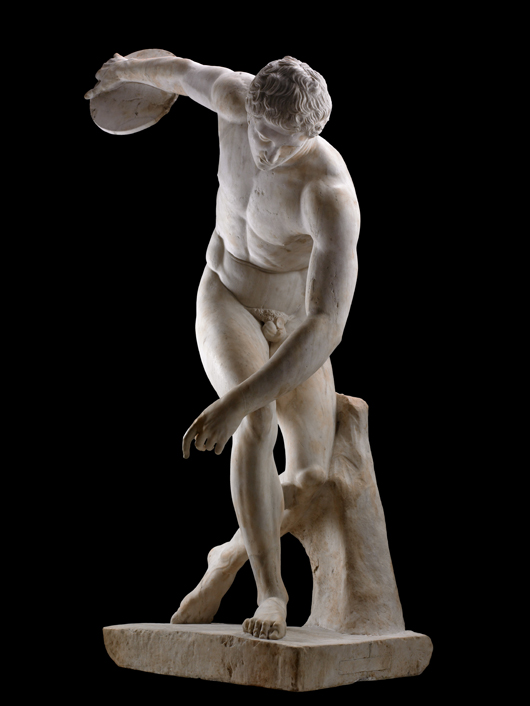
One of the centerpieces of The Body Beautiful exhibit, the Myron Diskobolos illustrates the aspect of nudity in athletics in ancient Greek art. This nude body certainly asserts the beauty of the body and shows us an example of what is beautiful also being equated with what is good. And, brings us further into our discussion of nudity in Greek art as having many different forms and meanings.
We have seen nudity with the male form as a way to define and show perfection and the ideal human form. Nudity is also a custom of the gods, and therefore, a costume worn by god-like men.
The greatest of all civic heroes, we can say, is Pericles. And our model of a hero par excellence, Theseus. When we see these men depicted in the nude in war or battle, we can acknowledge that their physical prowess is being shown-off; but going into battle naked was not realistic, highly dangerous, and not the best way to fight. Yet depictions of nudity in these battle-scenarios symbolizes an elevated and exhalted status, showing a sense of impending victory and courage, and of physical power. This is “heroic nudity.”
We also see examples of “political nudity”—where political heroes are shown in the costume of democracy. The removal of their clothes effectively distinguished them as “great leaders” and physically fit leaders in the political realm.
“Civic nudity” with the heroes as citizens (such as two brothers, The Tyrannicides, Harmodius and Aristogeiton, who plotted to murder and over throw the Peisistratid tyrant Hipparchus) are depicted in statuary nudes as heroes of the state, in a willingness to shed all, to trust all and to exemplify “democratic nudity.”
Common laborers can be depicted nude, as well. Shown naked, their sweat and muscles revealing how hard they work. Even nudity is used to show age from youth to the elderly: one nude illustrating the fresh, strength and slenderness of youth to the other revealing the sickness and weakness possible with the dead, dying and aged. But both show us a vulnerablility, a fragility, if you will,—one of the young, one of the old.
Nudity can give us a glimpse of suffering, defeat, and impending death as we see in Ajax as he prepares to throw himself on his own sword and take his own life: he is the fallen, isolated, tortured hero as nude. [Black Figure Amphora, The Suicide of Ajax, Greek, 540 BC.] Perhaps “pathetic nudity.”
We see a full frontal of a nude Cassandra in a Red Figure Hydria, [Naples, Kleophrades Painter]; or a naked Hector bound to Achilles’ chariot…both strong and emotional depictions of nudity. [Attic Hydria, Achilles Dragging Hector, 520-510 BC.]
And, this brings us to the concept of the difference between sexual nudity, soft nudity, nudity for nudity’s sake and actual nakedness, as well as the comparison between male and female nudity. Nudes and nudity in Greek art do not always divulge the same connotation or meaning. We have the presentation of nude versus clothed and the revelation: there is much more to a Greek nude than just perfect flesh and “heroic nudity.”
Following his lecture, Dr. Hurwit led a public tour of The Body Beautiful at the Portland Art Museum. His tour continuing and illustrating points made in his lecture, provided insightful scholarly commentary on numerous works in the exhibit including the many iconic marble and bronze sculptures, vessels, and funerary objects most coming from the second and third millennium BC. For more information on the exhibit at the Portland Art Museum please refer to, The Body Beautiful.
[This article is a brief summary of the lecture Professor Hurwit gave on October 28. A full recording of the lecture will be available shortly and will be linked to this article.
We extend a sincere thank you to Professor Hurwit for his lecture, Nudes and Nudities in Greek Art and his tour of The Body Beautiful in Ancient Greek Art. Also, many thanks to the Portland Art Museum for their cooperation and assistance with this event.]
About Dr. Jeffrey Hurwit: Dr. Hurwit has degrees in Classical Languages and Literatures from Brown University and a Ph.D. in Classical Art and Archaeology from Yale. He has taught at Yale, subsequently joining the UO faculty in the History of Art and Architecture. He holds a co-appointment in the Classics Department and holds a Philip H. Knight Professorship.
A leading scholar of the archaic and classical periods in Greek art, Professor Hurwit has appeared in major documentary films and lectures at the world’s top universities, museums, and archaeological institutes. The recipient of many prestigious awards, including a Guggenheim Fellowship and the University of Oregon’s Faculty Excellence Award, Professor Hurwit is the author of many works on the art and civilization of Archaic and Classical Greece. Among his many influential publications that are regarded as standards in the field, his recent book, The Acropolis in the Age of Pericles is considered the definitive work on the subject.
Professor Hurwit regularly conducts research in Greece and Italy, and has been selected four times to teach in the Northwest Council for Study Abroad programs in Siena and Athens. He has spoken widely across the United States and Canada and has also served three times as a study leader for Smithsonian Institution tours of Greece and the Mediterranean. In 2000, he was appointed to the prestigious Martha S. Joukowsky Lectureship for the Archaeological Institute of America, and in 2003 became the inaugural Dorothy Burr Thompson Memorial Lecturer at University of British Columbia. He has also served on the editorial board of the College Art Association’s Art Bulletin and on the Publications Committee of the Getty Research Institute.
Professor Hurwit is also currently working on Palaeolithic cave-painting in addition to his studies in ancient art.
Read one of Dr. Hurwit’s articles on this subject, The Problem with Dexileos: Heroic and Other Nudities in Greek Art.
.




